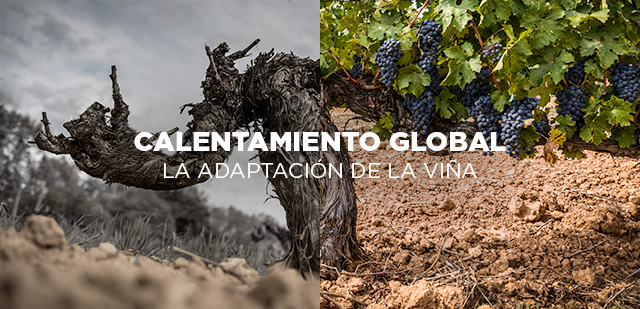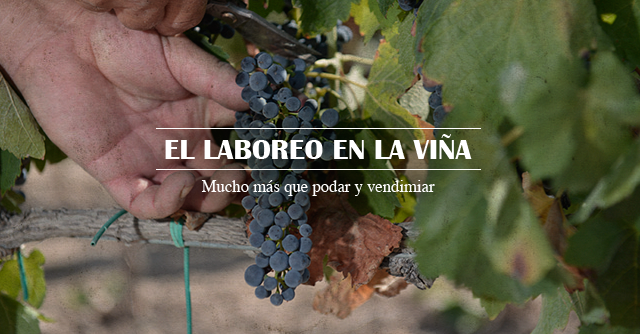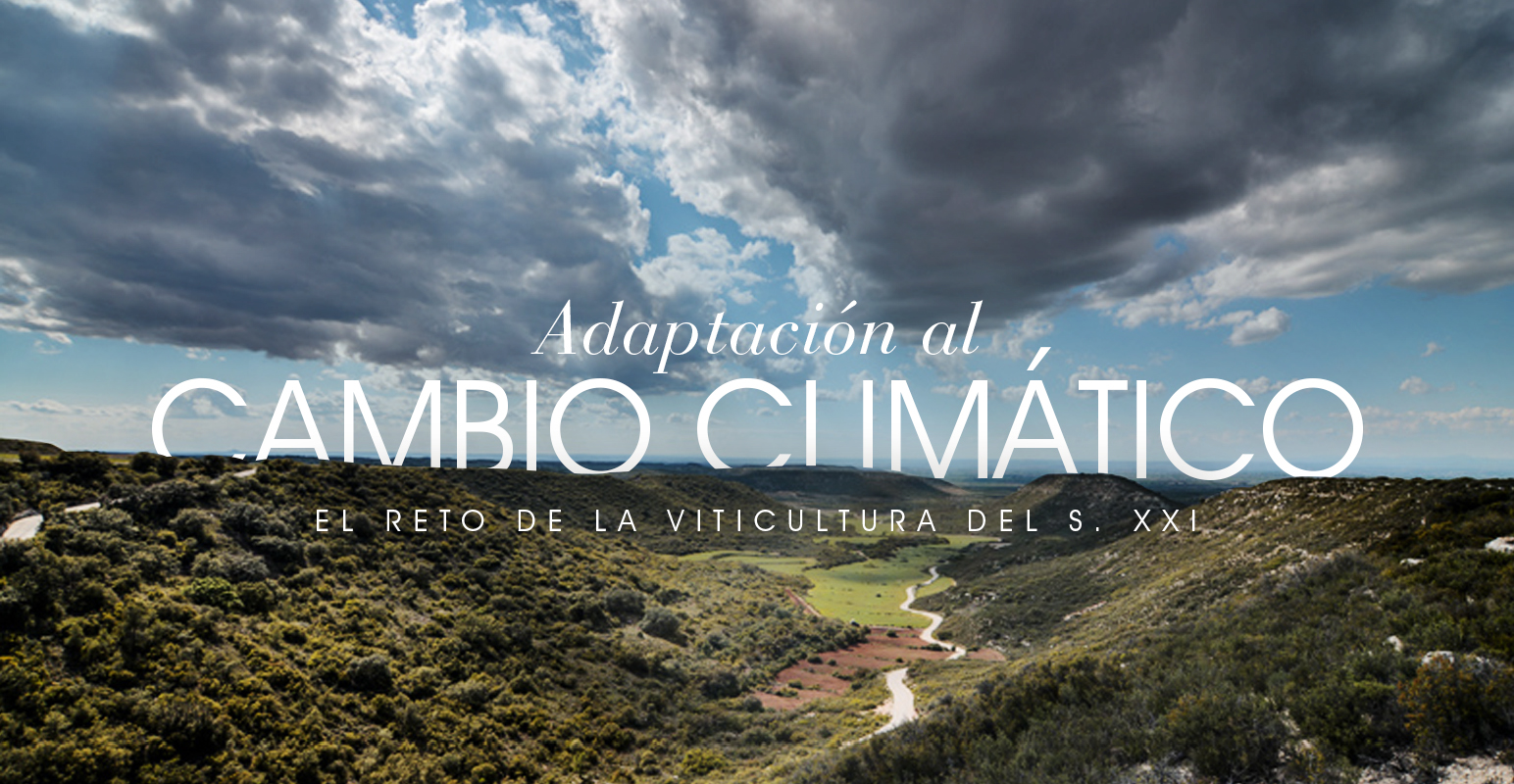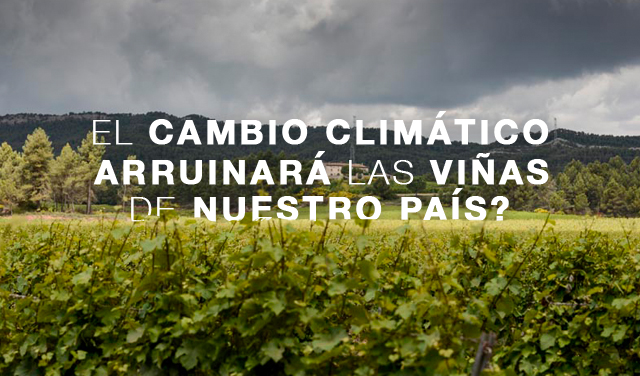GLOBAL WARMING

By now wine producers and growers agree that climate change is an undeniable fact; for them, it is more than a shared opinion. As experts with a deep understanding of the earth, they have experienced the gradual rise in temperature as a palpable reality over the past 30 years.
Unbalanced ripening, loss of acidity... When it comes to grapes, high temperatures and extreme water stress have numerous negative consequences.
All human intervention aside, can the vineyard adapt to these conditions? Does it have defense mechanisms to deal with heat and drought?
Here is where nature does something astonishing, something best described as perfect and astute genetic planning: much like human beings, the grapevine adapts to its environment and the changes produced therein, capable of resetting its metabolism to survive under severe, even extreme, climatic conditions.
In response to heat and drought, the grapevine has developed three adaptive mechanisms that embody the plant's incredible capacity for survival, as well as the complexity and magic of nature.
Escape Mechanism
As the name suggests, the plant can speed up or slow down its phenological development and growth cycle to survive periods of extreme water scarcity.
Fast-germinating plants found in very arid areas like the desert offer a visually striking example of this type of mechanism.
Tolerance Mechanism
This mechanism represents the plant's rapid response when it senses an imminent water deficit. It is designed to ensure the perseverance of cellular components. This is why plants have the ability to transpire through their leaves, specifically through microscopic openings called stomata. Stomata can open and close to regulate the plant's evapotranspiration and may even close completely under extreme drought conditions to preserve moisture. The regulating function of the stomata also affects the plant's overall metabolism—its sugar production, for example.
Avoidance Mechanism
Here the plant tries to manage its resources while expending as little energy as possible.
This involves several physiological mechanisms that regulate the plant’s water resources during drought stress. Put simply, the plant controls how much it “sweats” by doing the following:
• Decreasing its foliage production; bending its leaves or placing them in a more vertical position.
• Intentionally slowing down its growth rate.
• Prematurely drying out its leaves or even the grapes (in very extreme climatic situations).
Whereas the aforementioned mechanisms help grapevines survive climate change temporarily, they are not enough to tackle this challenge in the long term, with temperatures projected to rise between two and five degrees during the course of this century. Even so, we must keep in mind that the biggest problem is not a rise in average temperature, but the frequency of extreme events, such as temperatures over 37ºC, an increase in hailstorms, rising bouts of April frost after a mild March, resulting in frozen shoots and damage to the plant...
Torres & Earth: Science and Humanity
In terms of human action, we can turn to scientifically-based cultural practices that make it possible to reduce the impact of global warming.
This is why Bodegas Torres is working on several projects, aimed at different goals, as part of its Torres & Earth program: tackling the steady rise in temperatures, water-saving measures, energy efficiency and more.
Bodegas Torres is also adapting its vineyards to delay grape maturation by using viticultural methods like varied planting schemes, more drought-resistant rootstocks, and cultivation and canopy management techniques.
In addition, the winery is seeking new cultivation areas at higher altitudes where the climate is cooler and allows for balanced grape ripening, as well as a higher concentration of varietal aromas and good acidity. Despite these positive aspects, one must accept a higher risk of hailstorms and frost.
[[{"fid":"9190","view_mode":"default","fields":{"format":"default","field_file_image_alt_text[und][0][value]":false,"field_file_image_title_text[und][0][value]":false},"type":"media","link_text":null,"attributes":{"height":611,"width":1133,"style":"width: 600px; height: 324px;","class":"media-element file-default"}}]]
Vineyards in Sant Miquel (Tremp) at 850 meters, in the foothills of the Catalan Pyrenees
At the same time, the project to revive ancestral varieties, which predates the Torres & Earth program, has unearthed several varieties that display great enological potential, as well as a natural resistance to rising temperatures, drought and a variety of grapevine diseases.
[[{"fid":"9191","view_mode":"default","fields":{"format":"default","field_file_image_alt_text[und][0][value]":false,"field_file_image_title_text[und][0][value]":false},"type":"media","link_text":null,"attributes":{"height":610,"width":1112,"style":"width: 600px; height: 329px;","class":"media-element file-default"}}]]
Samples of ancestral varieties being studied in the lab
Now, more urgently than ever, the challenge of global warming demands a more unified and cohesive effort with a greater awareness of the limitations and respect for the environment. These resources represent an incredible natural masterpiece of genetic engineering. Let's take care of them.



